Life with the Talang Mamak
Monday 15th August 2005
The next day brought with it another early start as we set off for a Talang Mamak village deep within the forest. Accompanied by Pak Yunus, Andi from the Department of Forestry, and four of the STCP – Pak Muji, Mario, Toto and Hendra, we set off by 4x4 on a deeply gullied track. Luckily Mario, Toto and Hendra had their motorbikes, because we were not long into the journey when the car gave up. It was then a case of ferrying the eight of us, plus food, camera equipment, a generator and gasoline deeper into the forest before all signs of a track disappeared. The team took everything in their stride and with great humour. Everyone had a good laugh at Nick’s expense when he was pitched off the back of the bike as it reared up a particularly nasty rut. With a huge rucksack on his back he got wedged in a gully in the road, legs waving in the air. After hiding the bikes in the forest we continued by foot.
We arrived at the village just as the light was beginning to fade, after a long and hot five hour walk. The villagers are familiar with the tiger team now – the patrols pass through regularly – although Pak Yunus tells us that the first time he came here a woman ran away screaming when she saw him, thinking, due to the military-style clothing warn by the Unit, that he was part of an invading army. The village is still very isolated and the villagers almost completely self sufficient. They survive on what the forest has to offer them, and they manage to do so sustainably. Yunus tells us that the first time he visited the village there was not really any concept of money. Everything cost 5,000 Rp – one fruit cost the same as ten of the same fruit. With a growing involvement in life outside the forest, money has become more important and villagers can now raise some hard currency by selling the sap that they collect from a rare and particularly valuable sort of rattan that grows locally. A villager is taxed if they kill the plant when they harvest, and fined one goat.
We spent a few days staying at a house in the village that, confusingly, had no walls but did have doors and windows with padlocks and shutters. When we asked why there were doors and windows but no walls, the team laughed and admitted they had not noticed this before. During our stay we got to know several of the villagers including the chief, his son, and the teacher. We swam in the beautiful and pristine river that passes by their doorsteps, and ate what tasted like delicious feasts cooked up by Mario, although they mostly consisted of supernoodles, kecap, and edible bracken picked from the forest. Pak Muji was asked to fix the village’s new TV, the first and only one, powered by the village’s one generator. We understand that someone had inadvertently killed the colour with on of the dials. When the colour was successfully returned, Pak Muji was hailed as a healer. The village now has a school, which Pak Yunus was instrumental in setting up a few years ago, but as yet literacy is still very low. Yunus told us that everyone in the village smokes, except one person, and we even saw very small children smoking. Life expectancy here is well below the national average.
We made the journey out of the forest by dugout canoe, traveling downstream for two days with Pak Yunus, Andi, and the Chief and his son (Mario, Toto, and Hendra traveled out of the forest on foot). The chief displayed his amazing knowledge of the local area and ecology – he was able to name every subspecies of Meranti, and knew every ladang (small forest clearing) by name. Meanwhile Andi entertained us with enthusiastic renditions of virtually every Phil Collins song ever written (during- and post-Genesis) as well as sharing his anecdotes of his time working at Tanjung Patung National Park in Kalimantan, where he was stationed during the making of the now fairly infamous Julia Roberts Orangutan film.
Pak Ari, an STCP driver, picked us up in the jeep further downstream where the river meets a track. The journey back to the main road was not plane sailing once we were back in the jeep however – unfortunately, although perhaps quite suitably – a palm oil truck was stuck in the mud and had blocked the road. It seemed a fitting conclusion to our final day of shooting.
The next day brought with it another early start as we set off for a Talang Mamak village deep within the forest. Accompanied by Pak Yunus, Andi from the Department of Forestry, and four of the STCP – Pak Muji, Mario, Toto and Hendra, we set off by 4x4 on a deeply gullied track. Luckily Mario, Toto and Hendra had their motorbikes, because we were not long into the journey when the car gave up. It was then a case of ferrying the eight of us, plus food, camera equipment, a generator and gasoline deeper into the forest before all signs of a track disappeared. The team took everything in their stride and with great humour. Everyone had a good laugh at Nick’s expense when he was pitched off the back of the bike as it reared up a particularly nasty rut. With a huge rucksack on his back he got wedged in a gully in the road, legs waving in the air. After hiding the bikes in the forest we continued by foot.
We arrived at the village just as the light was beginning to fade, after a long and hot five hour walk. The villagers are familiar with the tiger team now – the patrols pass through regularly – although Pak Yunus tells us that the first time he came here a woman ran away screaming when she saw him, thinking, due to the military-style clothing warn by the Unit, that he was part of an invading army. The village is still very isolated and the villagers almost completely self sufficient. They survive on what the forest has to offer them, and they manage to do so sustainably. Yunus tells us that the first time he visited the village there was not really any concept of money. Everything cost 5,000 Rp – one fruit cost the same as ten of the same fruit. With a growing involvement in life outside the forest, money has become more important and villagers can now raise some hard currency by selling the sap that they collect from a rare and particularly valuable sort of rattan that grows locally. A villager is taxed if they kill the plant when they harvest, and fined one goat.
We spent a few days staying at a house in the village that, confusingly, had no walls but did have doors and windows with padlocks and shutters. When we asked why there were doors and windows but no walls, the team laughed and admitted they had not noticed this before. During our stay we got to know several of the villagers including the chief, his son, and the teacher. We swam in the beautiful and pristine river that passes by their doorsteps, and ate what tasted like delicious feasts cooked up by Mario, although they mostly consisted of supernoodles, kecap, and edible bracken picked from the forest. Pak Muji was asked to fix the village’s new TV, the first and only one, powered by the village’s one generator. We understand that someone had inadvertently killed the colour with on of the dials. When the colour was successfully returned, Pak Muji was hailed as a healer. The village now has a school, which Pak Yunus was instrumental in setting up a few years ago, but as yet literacy is still very low. Yunus told us that everyone in the village smokes, except one person, and we even saw very small children smoking. Life expectancy here is well below the national average.
We made the journey out of the forest by dugout canoe, traveling downstream for two days with Pak Yunus, Andi, and the Chief and his son (Mario, Toto, and Hendra traveled out of the forest on foot). The chief displayed his amazing knowledge of the local area and ecology – he was able to name every subspecies of Meranti, and knew every ladang (small forest clearing) by name. Meanwhile Andi entertained us with enthusiastic renditions of virtually every Phil Collins song ever written (during- and post-Genesis) as well as sharing his anecdotes of his time working at Tanjung Patung National Park in Kalimantan, where he was stationed during the making of the now fairly infamous Julia Roberts Orangutan film.
Pak Ari, an STCP driver, picked us up in the jeep further downstream where the river meets a track. The journey back to the main road was not plane sailing once we were back in the jeep however – unfortunately, although perhaps quite suitably – a palm oil truck was stuck in the mud and had blocked the road. It seemed a fitting conclusion to our final day of shooting.
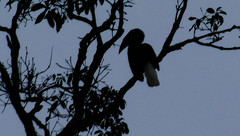
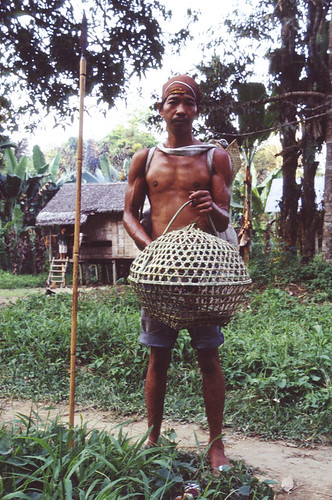
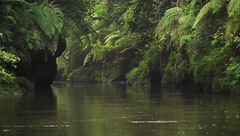

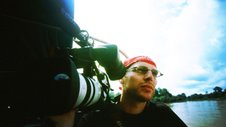
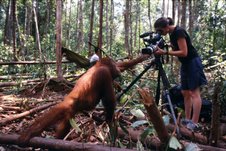
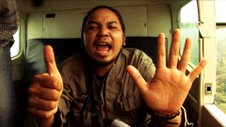


No comments:
Post a Comment